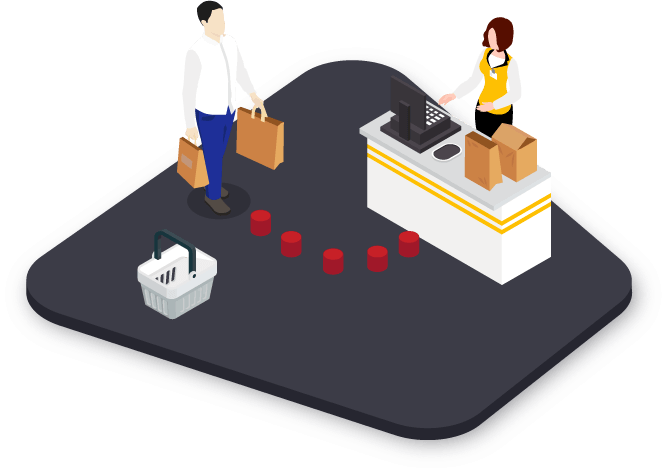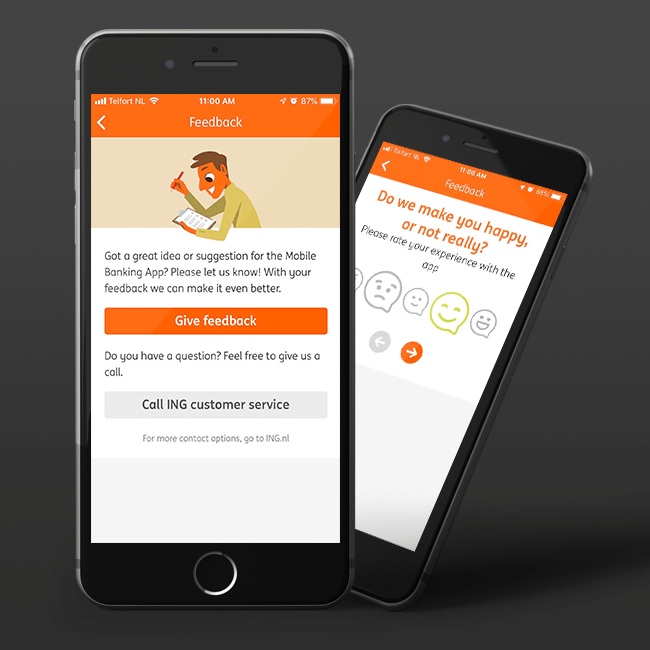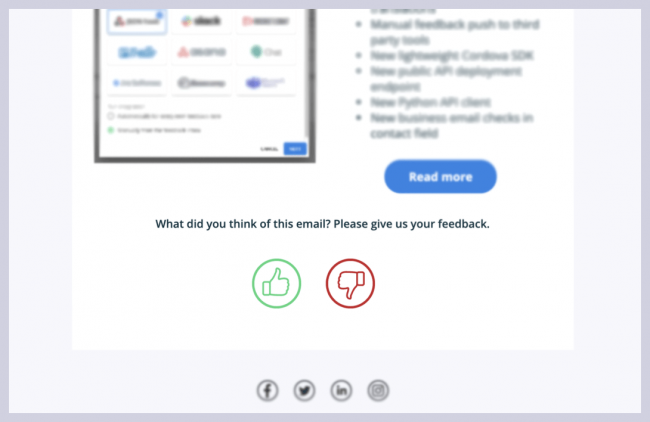You’re only as good as your customer experience – and only a superior customer experience is what will convince your customers to return time and time again. So what’s stopping organisations from providing a top-notch customer experience for their customers? The answer is a lack of insights; insights into what customers are doing, how they experience the brand’s digital channels and where they run into trouble when it comes to achieving their goals. Thankfully this can be obtained through what is referred to as customer experience feedback.
If you think you’ll have plenty of time to get it right because you’re a beloved brand, think again. Imagine losing one-quarter of your customers in a single day. For good. Because that’s exactly what could happen after just one bad customer experience.
PWC
There are various strategies for collecting and analysing customer experience feedback – all of which depend on your organisation’s goals, the digital channels you’re using (i.e. website feedback, mobile feedback and email feedback) and of course, how you wish to proceed with the feedback you’ve collected.
Ready to dive in and learn more about customer experience feedback? Then keep reading…
What is customer experience feedback?
A great customer experience (CX) can be the defining factor that sets a business apart from its competitors. CX has also become a top priority among customers when choosing a product or service. Customer experience feedback helps users gain deep insights into the customer experience, which in turn provides them with the means to enhance their CX and bring in more customers.
Here are some examples of Customer Experience Feedback Surveys.
We see our customers as invited guests to a party, and we are the hosts. It’s our job every day to make every important aspect of the customer experience a little bit better.
Jeff Bezos
Why is customer experience feedback important?
Measuring customer experience allows you to understand how your customers feel about your brand, product or service. It also gives you and your team deeper insights into your customer experience journey as a whole; insights which can in turn be used to improve the journey and boost customer retention. In other words, you can make informed decisions and ensure your customer experience meets the needs of your customers.

A solution for Customer Experience professionals
Drive customer-centricity across your entire organisation with customer experience feedback
Where to collect customer experience feedback
The customer experience happens across multiple channels, meaning organisations need to have all of their bases covered if they want to measure the entire customer experience. Three critical places to gather this customer feedback include the website, mobile apps and via email.
Website feedback
Collecting customer experience feedback from your website is the most common way of gathering feedback. It will help you understand which areas of your website are performing well and which areas could be improved upon, i.e. certain pages and funnels that are key to the customer journey. There are many ways to collect website feedback including a generic feedback survey which is accessible via some or all pages on the website (A.K.A. a passive feedback survey), at the bottom of a webpage via an embedded survey, or as a popup / slide-in survey (A.K.A. an active feedback survey).

Example of a customer experience feedback survey (in the passive form).
Mobile feedback
Additionally, you can collect customer experience feedback from your mobile app(s). Mobile feedback is one of the few solutions that has a direct impact on the mobile experience. This is because in addition to measuring hard metrics such as Net Promoter Score and CSAT, mobile feedback can also provide your organisation with the sentiment behind user behaviour, through mobile survey elements such as open comments. This qualitative data provides a deeper understanding of your mobile users, thus equipping your organisation with the means to cater more effectively to their needs.

Email feedback
Email feedback plays an important role in customer-centricity. By collecting feedback within your email campaigns, you are providing a platform for two-way communication with your customers where they can share their thoughts and perceptions of your email(s) and the information you’ve provided. In other words, you as a marketer gain insight into what your readers truly value and can boost the customer experience as a whole. Email feedback can be collected in various ways including, email signature feedback, email feedback surveys and email campaign feedback.

Tips for collecting customer experience feedback
Let’s explore how your organisation can get started with collecting customer experience feedback.
1. Define your objectives. Before you get started, it’s important to define what the objective or goal of the feedback survey is. In other words, what do you want to learn from it and why? Do you want to gain insight into customer loyalty? Or should the survey be more geared towards a particular online process (e.g. purchasing)? If you outline your objective(s) properly, it will help you come up with the right (and most relevant) questions to ask later on in the process.
2. Keep it short. We cannot stress this enough! The majority of your customers simply do not have the time to go through and answer long and drawn out feedback surveys. It’s a hassle for them and it has a high likelihood of causing what we call ‘feedback fatigue’. So how do you know when your survey is too long?
3. Put yourself in your customers’ shoes. Having to fill out a form of 20 questions is less than ideal. It’s actually much more beneficial to ask around 2 to 3 powerful and well-formulated questions. You’ll be surprised to see how much your response rates rise…
4. Interaction is key. Don’t make your questions too intricate – be clear in what you are asking so your customers understand. Always try to incorporate one or two questions that require an open-text answer. These will give you deeper insights into how your customers feel and can even generate ideas you haven’t thought of yourself.
5. Keep it relevant. There are appropriate questions and inappropriate questions to ask depending on your goal(s). For example, you wouldn’t ask someone to provide an Net Promoter Score (NPS) right as they’ve entered your website or before they’ve even become a customer. This goes to show that timing is rather important and surveys should be situational.
This also applies when using survey logic. Survey logic is when you trigger different follow up questions depending on the previous answer given. For example, if you ask for a Customer Satisfaction (CSAT) rating and the visitor provides that they are ‘Very Dissatisfied’, then you can ask them ‘why’. Why are they so dissatisfied? These kinds of relevant questions will give you deeper insights into what your customers are thinking.
A customer experience to rule them all!
Already aligned your objectives and come up with a plan of action? Then you’re ready to select a customer experience feedback software. There are a wide variety of software on the market, all of which cater to different goals. Be sure to check out this list for some inspiration.
And don’t forget to take the appropriate next steps with your customer experience feedback. Gathering feedback alone is not sufficient if you truly want to boost your CX. Try some of these customer feedback analytics techniques and start making the most of your feedback program.
Curious how organisations like yours leverage user feedback?
Check out these customer stories






